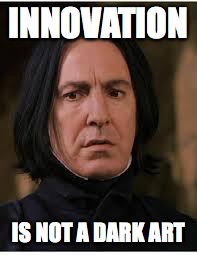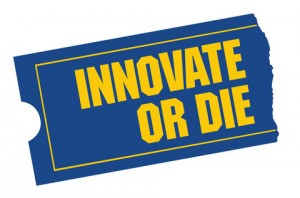
Image Sourced From: www.quirkbooks.com
For nearly five years now I’ve been responsible for creating and delivering professional development sessions for colleagues. Of course, I’ve also attended a large number of such “learning opportunities” which have varied from the woeful to the inspirational. There are some great presenters out there but often it’s more performance than substance.
I know the “fire hose method” doesn’t work … you know those one-off occasions where you blast the 75 people in the room with frantic content delivery in the hope that at least someone is knocked off their feet. Earlier this year I was asked by Australian Teacher Magazine to write a Help Desk article on running great technology PD sessions. I’m utterly convinced that “fixing the current PD model” is akin to brewing a magic potion.
“Am I about to give you the ultimate secret to success? No, if I had that, I would be bottling and selling it.” (You can find the full article in Volume 14, Issue 7, July 2016)
I did identify five key considerations for developing worthwhile PD … terminology, scheduling, content, engagement and alternatives. Part III of The Innovator’s Mindset identifies the need to provide teachers with personalised, targeted and engaging professional learning. This learning has to be (… and I love this idea, thanks George) about moving each individual from ” … their Point A to their Point B.” This, I’m convinced, has been the missing ingredient in my magic potion. I also believe that I am my own worse enemy and I admitted this in the ATM article.
“There is no value in you rushing on to the next “cool tool” when participants are still creating an account for the previous one. In my passion for technology and sharing what I have learned, I too often forget that others won’t necessarily keep up with me.”
And for now … time to get back to the cauldron! One day I’m going to be a very rich man.
PS: And remember … If you haven’t yet seen my #IMMOOC meme





